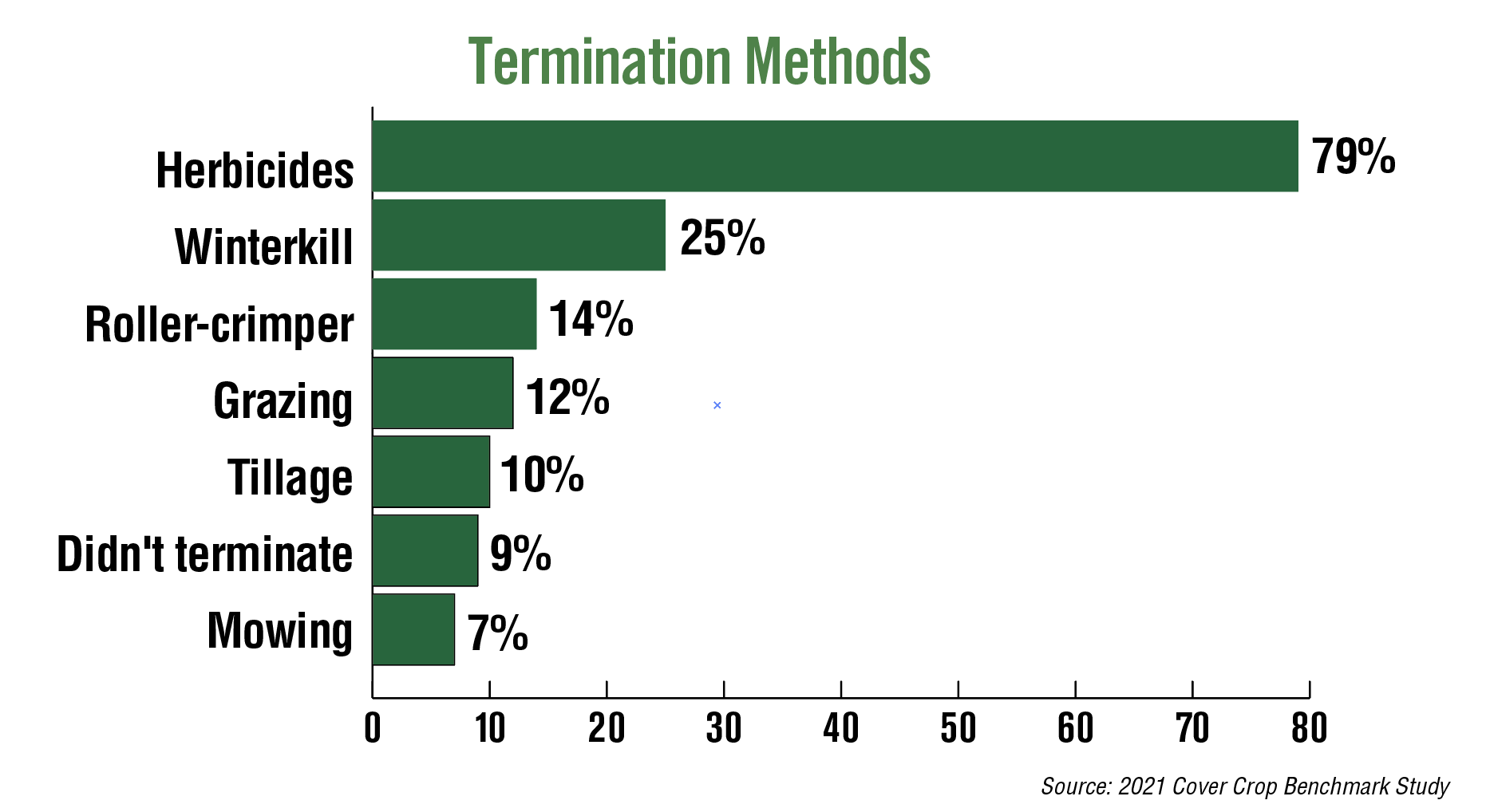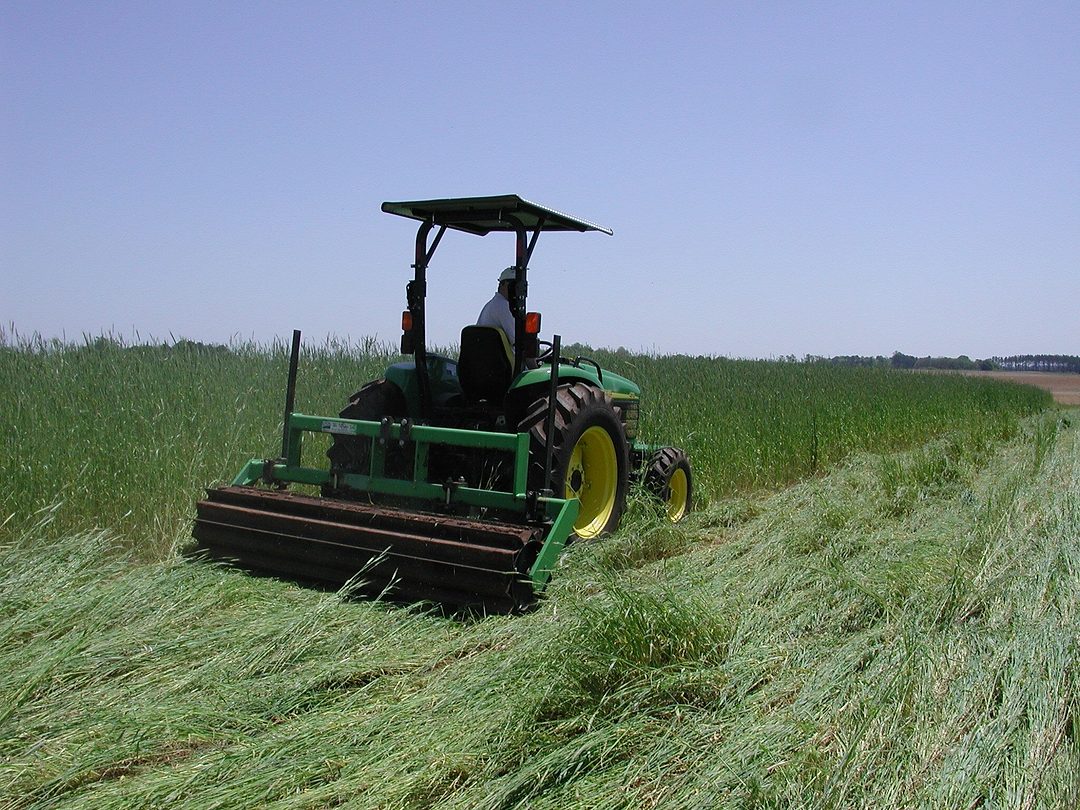An important aspect of raising cover crops is terminating them. Growers have options when it comes to terminating covers, and factors such as cost, location, and weather come into play as well.
In the 2021 Cover Crop Strategies Cover Crop Benchmark Study, herbicides were the termination method of choice for most growers — a whopping 79%. Another quarter of growers use winterkill cover crop species, while roller-crimping covers is done by 14% of growers.

Glyphosate was the overwhelming herbicide used for cover crop termination, with 94% of respondents stating that they used it to terminate covers. The herbicide 2,4-D was utilized by 43% of growers, followed by paraquat terminating 11% of covers.
For growers who were planning to plant corn in a field after covers, 47% of respondents terminated cover crops before planting. A third of growers terminated covers after planting, and 21% of growers terminated covers at planting time.
Fields going into soybeans were handled a little differently than fields going into corn, with 57% of growers terminating covers after planting. Cover crops were terminated before planting soybeans by 35% of growers, followed by 20% of growers terminating at planting time.
Cover crops in fields going into wheat are terminated before planting by half of growers. However, 42% of growers opt not to terminate covers at all. Only 7% of growers killed cover crops at planting time for fields that will be planted with wheat.
Cotton growers take a very different approach on termination when compared to their peers that grow corn, soybeans and wheat, as 78% don’t terminate covers when the field is going into cotton. Covers are terminated before planting cotton for 16% of growers.






Post a comment
Report Abusive Comment